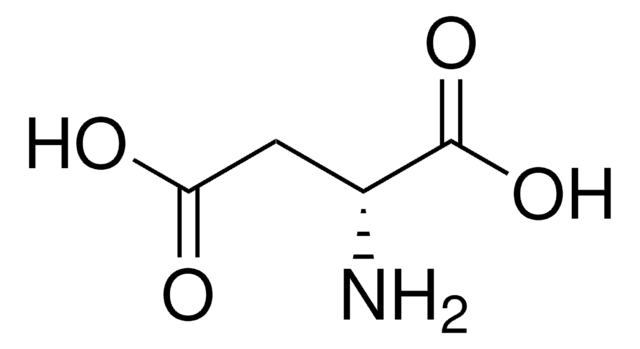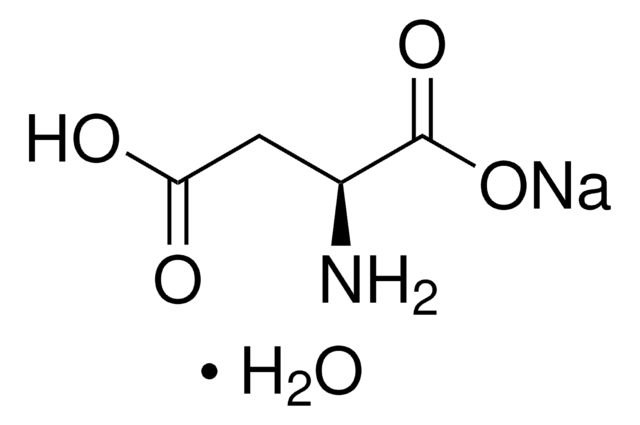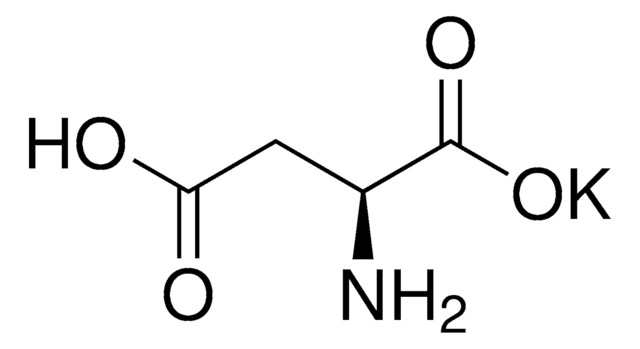A8949
L-Aspartic acid
≥99% (HPLC), BioXtra
Synonym(s):
(S)-(+)-Aminosuccinic acid, (S)-Aminobutanedioic acid
About This Item
Recommended Products
Product Name
L-Aspartic acid, BioXtra, ≥99% (HPLC)
product line
BioXtra
Quality Level
Assay
≥99% (HPLC)
form
powder
impurities
≤0.0005% Phosphorus (P)
≤0.1% Insoluble matter
ign. residue
≤0.1%
color
white to off-white
mp
>300 °C (dec.) (lit.)
solubility
1 M HCl: 0.5 M, clear, colorless
anion traces
chloride (Cl-): ≤0.05%
sulfate (SO42-): ≤0.05%
cation traces
Al: ≤0.0005%
Ca: ≤0.001%
Cu: ≤0.0005%
Fe: ≤0.0005%
K: ≤0.005%
Mg: ≤0.0005%
NH4+: ≤0.05%
Na: ≤0.005%
Pb: ≤0.001%
Zn: ≤0.0005%
SMILES string
N[C@@H](CC(O)=O)C(O)=O
InChI
1S/C4H7NO4/c5-2(4(8)9)1-3(6)7/h2H,1,5H2,(H,6,7)(H,8,9)/t2-/m0/s1
InChI key
CKLJMWTZIZZHCS-REOHCLBHSA-N
Gene Information
human ... CA1(759) , CA2(760)
rat ... Grin2a(24409)
Looking for similar products? Visit Product Comparison Guide
Application
- Metabolomics Analysis Identifies Differential Metabolites as Biomarkers for Acute Myocardial Infarction.: Research identifies key metabolites, including L-Aspartic acid, involved in the metabolic pathways affected during acute myocardial infarction. This study enhances the understanding of biochemical changes during heart attacks, potentially leading to better diagnostic markers (Zhou et al., 2024).
Biochem/physiol Actions
Storage Class Code
11 - Combustible Solids
WGK
WGK 1
Flash Point(F)
Not applicable
Flash Point(C)
Not applicable
Personal Protective Equipment
Choose from one of the most recent versions:
Already Own This Product?
Find documentation for the products that you have recently purchased in the Document Library.
Customers Also Viewed
Chromatograms
application for HPLCapplication for HPLCOur team of scientists has experience in all areas of research including Life Science, Material Science, Chemical Synthesis, Chromatography, Analytical and many others.
Contact Technical Service





